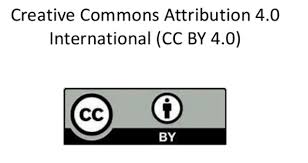The effect of salt on quality and storage stability of beef patties
DOI:
https://doi.org/10.47440/JAFE.2020.1106Keywords:
Beef patties, Salt, Refrigerated patties, Frozen patties, Proximate analysis, Sensory evaluationRemove Beef patties, Salt, Refrigerated patties, Frozen patties, Proximate analysis, Sensory evaluationAbstract
This experiment was conducted to find out the effect of different salt concentration on quality and storage stability of beef patties. For this purpose beef patties samples were kept as fresh, refrigerated and frozen condition. Then the fresh, refrigerated and frozen samples were divided into four subdivisions. These are 0% salt concentration, 1.5% salt concentration, 3.0% salt concentration and 5.0% salt concentration. These samples were stored at (23-25)˚C, 4˚C and -20˚C temperature for 60 days and were analyzed on 0 day, 7th day, 14th day, 21th day in refrigerated condition at 4˚C, and 0 day, 15th day, 30th day, 45th day and 60th day in frozen condition at -20˚C. Dry matter content of all the samples increased with the advancement of storage time & salt concentration and temperature in refrigerated & frozen condition (P < 0.01). Beef patties containing 5% salt & stored 21 days resulted higher dry matter in refrigerated condition (P < 0.01). Dry matter of beef patties was higher when salt containing 5% & stored 0 day in frozen condition. Ash was increased with the increased of salt concentration in both refrigerated & frozen condition. It was decreased with increasing day in both conditions. Ash % was higher at salt containing 5% & 0 days stored sample in refrigerated condition (P < 0.01). In frozen condition ash % of beef patties was higher when salt containing 5% & stored 15, 30 & 45 days. Crude protein content of all the samples increased with advancement of salt concentration but decreased with advancement of storage time in both condition. CP % was higher at salt containing 5% & 0 days stored sample in refrigerated condition. In frozen condition CP% of beef patties was higher when salt containing 3% & stored 0 day (P < 0.01). Salt concentration had no effect on EE & storage time had little effect on EE of beef patties. EE% of beef patties containing 0% salt & stored 0 day provided higher EE in refrigerated condition & it had no effect on frozen condition (P < 0.01). pH was increased in refrigerated condition with increasing salt% & decreased in frozen condition with decreasing salt%. pH was decreased with increasing days in refrigerated & frozen condition. pH of beef patties containing 0% salt & stored 0 day provided higher pH in both condition. Cooking loss was higher with lower salt concentration in refrigerated & frozen condition. Cooking loss was higher with higher storage time both refrigerated & frozen condition (P < 0.01). Cooking loss of beef patties was higher when salt containing 0% & stored 21 days in refrigerated & 60 days in frozen condition (P < 0.01). According to proximate composition sample containing 5% salt & stored at higher days provided higher DM%, CP% and ash%. The sensory based on firmness ,color, flavor, texture, tenderness, juiciness, chewiness, softness, hardness, taste and overall acceptance of the warm meat patties were evaluated by a trained sensory panel (N = 5). The panel consisted of experts who routinely evaluate beef patties. In case of sensory evaluation sample containing 1.5% salt provided best result of all above cases. Patties containing 3% salt was better than other sample containing 0% & 5% salt. Sample containing 0% & 5% salt of in case of sensory evaluation.






 Publisher:
Publisher: 